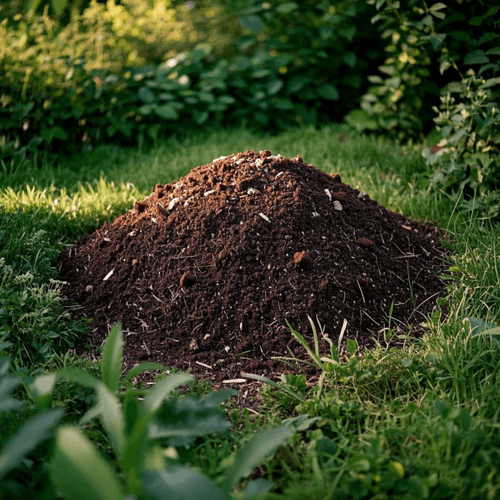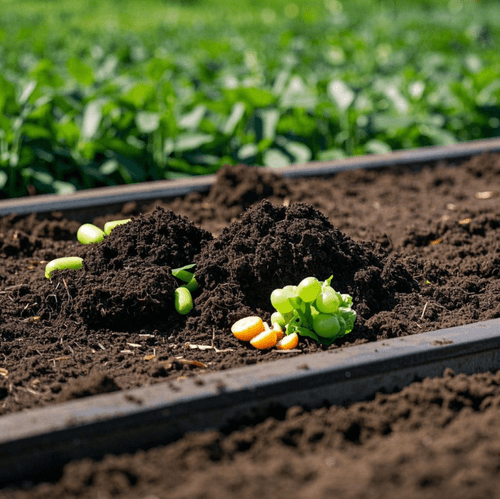Go Back

Organic Fertilizer Made from Kitchen Waste and Garden Waste
Composition Characteristics
Kitchen waste: It includes leftovers, fruit peels and cores, residues of meat, fish and shrimp, etc. It is rich in protein, fat, carbohydrates and various minerals, serving as an excellent source of nitrogen and carbon for organic fertilizers.
Garden waste:Such as pruned branches, leaves, weeds, etc. The main components are cellulose, hemicellulose and lignin. They can provide a certain amount of carbon source and a small quantity of mineral elements, and increase the content of organic matter in the fertilizer.
It is made through processes such as pretreatment, fermentation, and decomposition. It is rich in nitrogen, phosphorus, potassium and trace elements. It can improve the soil structure and enhance the microbial activity. It is suitable for the cultivation of fruits, vegetables, flowers, lawns, etc., and is both environmentally friendly and highly efficient.
Kitchen waste: It includes leftovers, fruit peels and cores, residues of meat, fish and shrimp, etc. It is rich in protein, fat, carbohydrates and various minerals, serving as an excellent source of nitrogen and carbon for organic fertilizers.
Garden waste:Such as pruned branches, leaves, weeds, etc. The main components are cellulose, hemicellulose and lignin. They can provide a certain amount of carbon source and a small quantity of mineral elements, and increase the content of organic matter in the fertilizer.
It is made through processes such as pretreatment, fermentation, and decomposition. It is rich in nitrogen, phosphorus, potassium and trace elements. It can improve the soil structure and enhance the microbial activity. It is suitable for the cultivation of fruits, vegetables, flowers, lawns, etc., and is both environmentally friendly and highly efficient.
More Details
Advantages
- Remarkable environmental benefits: Making organic fertilizers from kitchen waste and garden waste effectively reduces the amount of these wastes sent to landfills and incinerators, lowers the risk of greenhouse gas emissions and environmental pollution, realizes the resource utilization of waste, and promotes the development of a circular economy.
- Improve soil quality: After being applied to the soil, it increases the content of soil organic matter, improves the physical structure of the soil, enhances the soil's water and nutrient retention capacity as well as its air permeability, making the soil looser and more fertile, which is conducive to the growth and development of crop roots.
- Promote crop growth: The comprehensive nutrients and beneficial microorganisms provided can enhance the stress resistance of crops, improve their resistance to diseases, drought, and cold. At the same time, it promotes the growth and development of crops, and improves the yield and quality of agricultural products.
- Reduce production costs: Using waste to produce organic fertilizers, the raw materials are widely available and low in cost. Compared with traditional chemical fertilizers, the use of such organic fertilizers can, to a certain extent, reduce the production costs of agriculture and improve the economic benefits of agricultural production.
Disadvantages
- Complex treatment process: Kitchen waste has a complex composition, containing a large amount of oil, salt, and impurities. It needs to go through pretreatment processes (such as sorting, dewatering, desalination, etc.) before fermentation can take place. Larger materials like branches in garden waste also need to be crushed first, which increases the difficulty and cost of treatment.
- Potential risks exist: If not properly treated, harmful microorganisms (such as pathogenic bacteria, parasite eggs, etc.) and heavy metals in kitchen waste may remain in the organic fertilizer, causing pollution to the soil and crops. If garden waste contains invasive alien plants or sources of diseases and pests, it may also pose ecological risks after being returned to the field.
- Longer fermentation cycle: Due to the significant differences in the properties and compositions of these wastes, the fermentation process requires a certain amount of time to ensure thorough decomposition and harmless treatment. Generally, the composting and fermentation time may take several months, which affects the production efficiency and timely supply of organic fertilizers
Production Methods
- Aerobic Composting: Mix kitchen waste and garden waste in a certain proportion, adjust the moisture content to be between 50%-60%, and the carbon-nitrogen ratio to be between 20-30:1. Add an appropriate amount of microbial agents and conditioners (such as sawdust, straw powder, etc.), and stack them into windrows or put them into a fermentation tank. Turn the pile regularly to ensure the supply of oxygen, control the temperature at 50-65°C. After several weeks or months of fermentation, it can meet the standard of maturity.
- Anaerobic Fermentation: Put the waste into a sealed anaerobic fermentation device. Under anaerobic conditions, anaerobic microorganisms are used for decomposition and fermentation to produce biogas and organic fertilizer. This method can not only produce organic fertilizer but also generate clean energy biogas at the same time.
- Vermicomposting: Utilize the ingestion and digestion of organic waste by earthworms to convert kitchen waste and garden waste into earthworm castings organic fertilizer. Earthworm castings are rich in nutrients and beneficial microorganisms, and they are a high-quality organic fertilizer.
Scope of application
It is suitable for various horticultural crops, such as vegetables, flowers, fruit trees, etc., and can be used as a base fertilizer or a top dressing. In urban greening and garden landscape construction, it is used to improve the soil and enhance the growth quality of plants. In organic agricultural production, it meets the production requirements of organic agriculture and helps to produce green and organic agricultural products.



